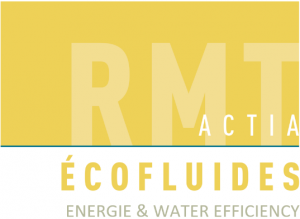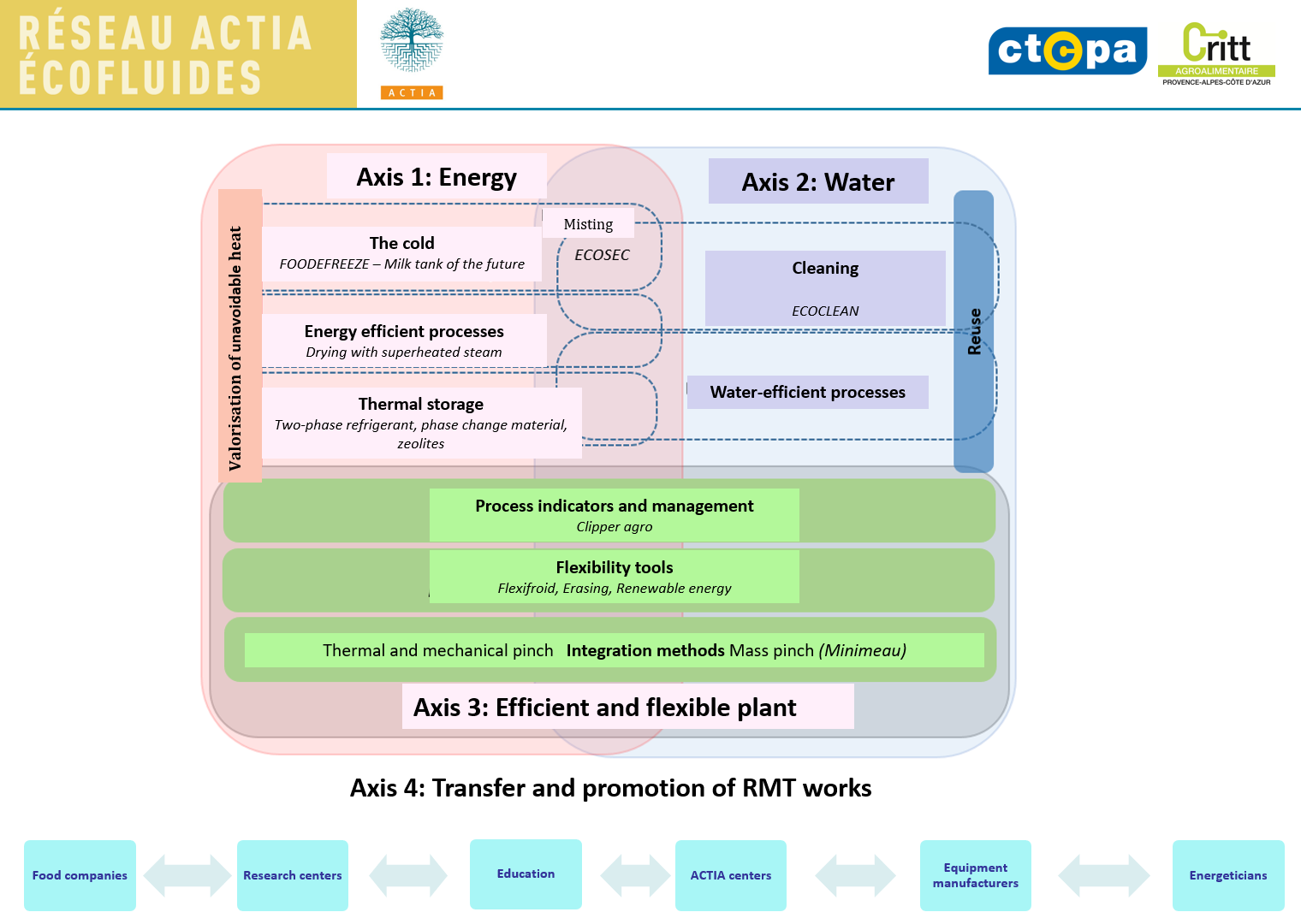
30 Apr RMT Ecofluides – A network serving research and innovation in the French food industry
As a national coordination structure, Actia unites the activities of Food technology institutes (ITAIs) and partners, interface centres and technical centres, whose 1,200 researchers, engineers and technicians provide daily support for companies, especially SMEs.
With more than 80 sites in France, Actia Centres intervene in all sectors of the food industries and in the non-food promotion of agricultural products (biotechnology, fine chemistry and pharmacy).
The Réseau mixte technologique (RMT – Joint Technological Network) is a scientific and technical partnership tool for the agri-foods sector established and supported by the Ministry responsible for Food, under the coordination of Actia.
Actia coordinates 10 RMTs, whose areas of expertise contribute to the aim of sustainable food production.
Coordinated by an Actia Centre, this group of stakeholders in development and transfer, research and education forms a unique network of expertise in its field. By pooling its competences and technical resources, the RMT contributes to the provision of concrete solutions for companies and public authorities.
Each RMT conducts research programs while providing information about technical advances and making them available in an accessible manner, so that they can be used rapidly and optimally by all operators.
 The subject of energy efficiency has been dealt with since 2007 by the ACTIA ECOFLUIDES network. Since January 1, 2020, this network has acquired the status of RMT, for a period of five years. It is run by CRITT Agroalimentaire with the support of the CTCPA and 14 other partners.
The subject of energy efficiency has been dealt with since 2007 by the ACTIA ECOFLUIDES network. Since January 1, 2020, this network has acquired the status of RMT, for a period of five years. It is run by CRITT Agroalimentaire with the support of the CTCPA and 14 other partners.
The general objective of the RMT ACTIA ECOFLUIDES is to increase the energy and water efficiency and flexibility of food businesses. For this, the work of the RMT will be broken down into specific objectives:
-
- Develop process solutions that are low in water and energy and that are easy to implement;
- Understanding the consumption of water and energy by real industrial needs, working on the efficiency of the use of a resource and not only on that of its production
- Improve the integration of indicators linked to water and energy in process management;
- Develop global approaches to energy and water management at the enterprise level to make them more flexible and improve their possibility of using renewable energies.
The RMT works exclusively for the food industry, thus in parallel with energy or water approaches, the possible impacts on the sensory and health quality of the products are systematically taken into account. For example, the FOODEFREEZE project aims to reduce the impact of defrosting operations on energy efficiency and also on product quality by developing advanced control systems that are based on better knowledge of the mechanisms of frost formation.
The diagram below presents the activity program of the RMT ACTIA ECOFLUIDES 2020-2024 which is organized around 4 axes, meeting its objectives:
2 thematic axes:
-
- Axis 1 Energy
- Axis 2 Water
2 transverse axes:
-
- Axis 3 Efficient and flexible plant
- Axis 4 Transfer and promotion of RMT works

Axes 1 and 2 Energy and water
The challenge of these thematic axes is to develop solutions that are low in water or energy on a process scale, such as drying by superheated steam. A flagship theme is highlighted in each of these thematic axes: cold for the energy axis and cleaning for the water axis.
On the energy side, storage is one of the solutions envisaged because it allows resources to be used when they are inexpensive or even free. It can intervene on the scale of a unit operation or industrial site.
Finally, recovery is also discussed, we talk about valorisation of unavoidable heat in the case of energy and reuse in the case of water. Recovery is transversal to the different themes, because for example in the case of energy, it can concern both cold and efficient processes (particularly in the case of drying by superheated steam), finally it can also be associated with storage.
Axis 3 : efficient and flexible plant
This axis offers transversal approaches to water and energy.
-
- The first consists in improving the use of water consumption and process energy data, by defining relevant indicators which, coupled with industrial performance indicators, will allow a more global view of the processes. It is also planned to go so far as to integrate these new indicators into process management.
- The second aims to develop tools that will help make the processes of agri-food companies more flexible, thus allowing the integration of an increasing share of renewable energies in their energy mix, including in the form of self-production. For this, modelling tools including in particular storage capacities treated in axis 3 will be developed.
- Finally, the thermal and mass integration methods will respond to a global approach to the development of the energy and water resources available on a site.
Axis 4 : Transfer and promotion of RMT works
The objective of this axis is to transfer the results of the RMT to all the stakeholders involved in the reduction of water and energy consumption: agri-food companies in the first place, energy suppliers, equipment manufacturers, researchers and engineers involved in R&D and support for companies, trainers, students, etc.
This transfer takes place on a French scale, but also on a European scale thanks to the involvement in projects like INDUCE.
The RMT ECOFLUIDES partners are indeed active on many European projects related to energy efficiency and many of them have signed up for training new INDUCE trainers.


